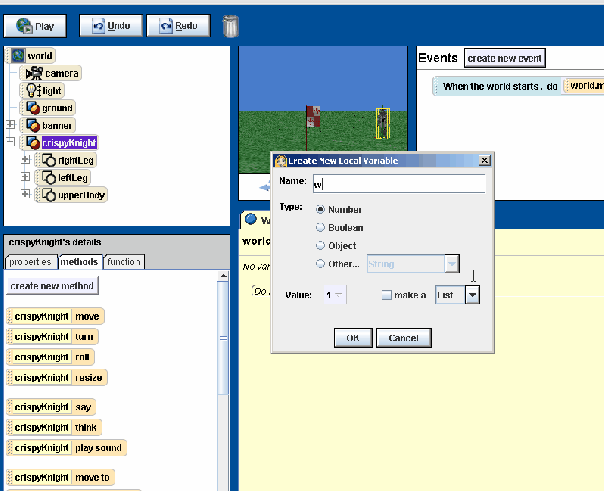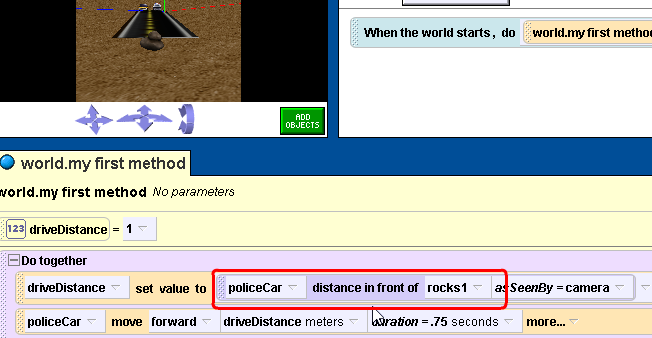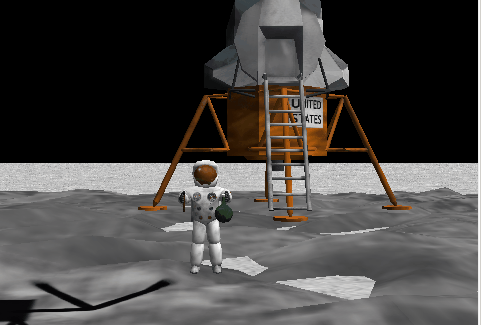This Page
- 1) Quiz topics overview
- 2) Unit 2 assignments
Unit 2 Quiz (mid -november-ish)
|
Drag Racing:
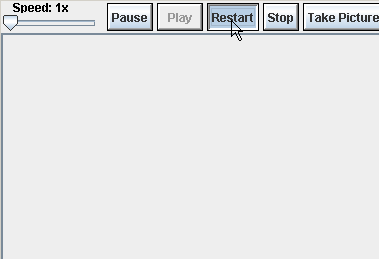
- ( DO NOT SUBMIT THIS VIA Google classroom. Show me this in class)
- Use at least 1 comment Link
- Create a world with a road (from the
Citycollection) and two cars (from theVehiclescollection). - Resize the road as necessary to match the size of the cars. The cars should be lined up side by side at one end of the road, which is a drag strip.
- Put an object at the end of the race to signify the ‘finish line’
- When the world is played, the cars should simultaneously move to the other end of the road and stop (You must use “do together”).
- use the “move” method for both cars

- Change the
duration of the
move method (see pic below) so that one car arrives before the other).
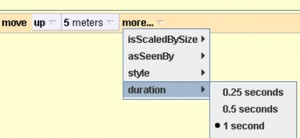
- Position the camera so you can see the cars as they approach the end of the drag strip.
- use a function to figure out how far they should move (You want to replace the value “5 meters” with a distance function)
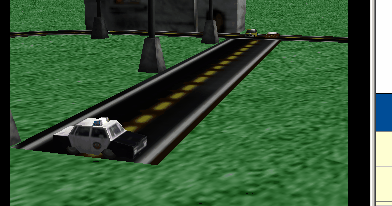
Then modify it
Space Ship Repair
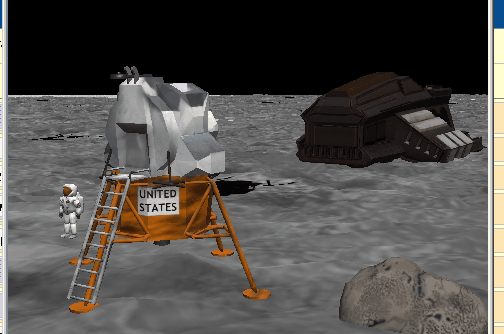
Create a space world with an astronaut and two spaceships(from the Web gallery’s Space collection). One of the spaceships is stranded with engine trouble, and the astronaut has arrived in the other spaceship to perform a repair.
- The astronaut should initially be positioned just outside one of the spaceships, about to perform a space walk to the other ship. When the world is played, the astronaut should initially be positioned just outside one of the spaceships, about to perform a space walk to the other ship.
- create a variable called walkingDistance (to represent how far the astronaut must walk)
- set the value of
walkingDistance to the returned value of a proximity function.

- When the world is played, the astronaut should float to the stranded spaceship, appear to work for a few moments, and then float back to the rescue ship. Hint : to get the spaceship guy to move in the right way (towards the ship). Use the “turn to face” method

- The repaired ship should then fly away, off the screen.
Before submitting check out some examples of code that prior students used and that did not get full credit here .
Apollo 15
- During the Apollo 15 mission to the moon, astronaut David Scott performed an experiment to prove that Galileo was right when he said that any two objects dropped at the same time would land on the ground at the same time in the absence of air. Scott, standing on the surface of the moon, dropped a hammer and a feather and indeed both objects hit the ground simultaneously.(Again, you must use “do together”)
- Create an Alice world that recreates the experiment. You will find classes for the astronaut, lunar Lander, and the moon’s surface in the Web gallery’s Space collection. You can find a class for the Hammer in the Objects collection. Substitute any object of your choice for the feather.
- Create a variable called dropDistance
- set the value of this variable to the returned value of a distance function to make the objects fall the distance above the ground. Use

- Make the two objects fall down the value of the dropDistance
B Before handing it in, look at some examples of work that students did and that did not receive full credit,. here.
End of Unit Open assignment
- Tell a short story that
- at least 3 objects
- at least 2 variables
- at least 2 functions
- sets the value of a variable to a returned value of a function
- uses that variable to move one of the objects
- ie make sure that your variable is actually used to do something.
Below is just one example. Your story can be about any topic.
Old assignments (ignore)
Penguin on a Table: Create a world with a penguin and a table. The penguin should be facing the table, standing next to it. The penguin should simultaneously flap its wings (use the wing_flap method) and move up in the air a distance that is exactly 1 meter higher than the height of the table. You can call the table’s height function to get its height. The penguin should then move forward to approximately the center of the table, and then move down to the surface of the table
